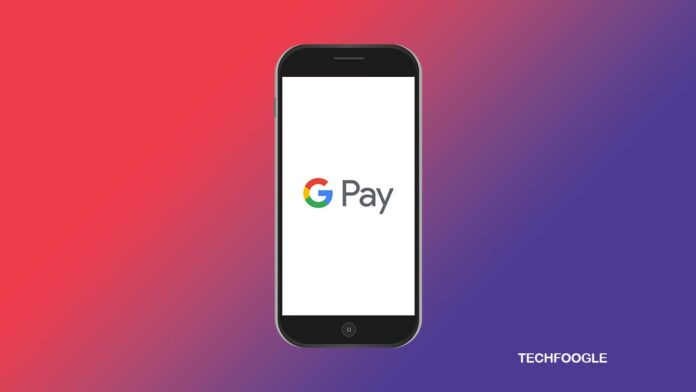Google Pay has introduced a new feature in India that allows users to authenticate their accounts using their Aadhaar card. This addition comes soon after Google Pay expanded its support for RuPay credit cards, demonstrating the platform’s commitment to improving accessibility and convenience for its users.
Table of Contents
Introduction
In its continuous efforts to enhance the user experience and promote digital payments, G Pay has recently introduced Aadhaar card-based authentication for setting up Unified Payments Interface (UPI) on its platform. Users can now link their Aadhaar cards to their Google Pay accounts, making transactions and balance checks more convenient.
Using Aadhaar for Google Pay Authentication
Setting up UPI on G Pay with Aadhaar authentication is a simple process. During the setup, users will be given the option to authenticate using either their Aadhaar card or a debit card. By selecting the Aadhaar card option, users must provide the first six digits of their Aadhaar card number and the one-time password (OTP) received from UIDAI (Unique Identification Authority of India) and their bank. Once these details are provided, the bank will process the authentication. Within a few minutes, the transaction will be completed.
Aadhaar G Pay To ensure a smooth authentication process, it is essential to have two prerequisites in place. The user’s phone number must be linked to UIDAI and the bank. Secondly, the bank account should be connected to the user’s Aadhaar Card. These requirements guarantee a seamless and secure authentication process for users.
Google Pay’s introduction of Aadhaar card-based authentication reflects its commitment to making digital payments accessible to a broader audience. By incorporating Aadhaar authentication into its platform, Google Pay aims to simplify the UPI setup process and eliminate the need for complex procedures.
Benefits of Aadhaar Authentication on Google Pay
Including Aadhaar authentication on G Pay offers several significant benefits to users. One of the key advantages is the enhanced convenience it provides. By utilizing Aadhaar cards, users can easily set up UPI on their Google Pay accounts without the hassle of multiple verification steps. It streamlines the process and saves users valuable time.
Moreover, this new feature aligns with the Indian government’s vision of financial inclusion. With a focus on driving digital payment adoption nationwide, the government has been actively promoting initiatives that facilitate easy and secure transactions. By integrating Aadhaar authentication, G Pay contributes to this vision, enabling a broader user base to participate in the digital economy.
India’s remarkable transition towards digital payments has been widely acknowledged, with UPI emerging as one of the preferred money transfer methods. The introduction of Aadhaar-based authentication on Google Pay is expected to accelerate the growth of the UPI ecosystem further. As more users embrace digital payments, the economy becomes more robust and dynamic.
Additional Features and Security
In addition to facilitating transactions, Aadhaar authentication on Google Pay offers other noteworthy features. Users can conveniently check their balances through the app, eliminating needing to visit physical bank branches or use separate banking applications.
Furthermore, users can enjoy the convenience of using a debit card without requiring a UPI PIN. This feature simplifies the payment process, allowing for swift and hassle-free transactions.
It is important to note that G Pay prioritizes user privacy and security. The platform ensures that Aadhaar card information is not stored within its system. This commitment to data privacy gives users peace of mind, knowing their sensitive information remains secure throughout the authentication process.
Banks Supporting Aadhaar Authentication on Google Pay
While the Aadhaar authentication feature is being rolled out, it is currently supported by several banks, including Punjab National Bank, Canara Bank, and Paytm Payments Bank. These banking institutions recognize the value of incorporating Aadhaar-based authentication, and their support contributes to the overall convenience and accessibility of Google Pay.
Although some central banks like HDFC and ICICI are not yet included in the list of supported banks, more banks are expected to be added soon. As Google Pay expands its partnerships, a more comprehensive range of users can leverage the benefits of Aadhaar authentication.
For an updated and comprehensive list of banks supporting Aadhaar authentication on Google Pay, users can refer to the official documentation provided by the platform.
User Opinions and Conclusion
As Google Pay introduces Aadhaar card-based authentication, it opens up new possibilities for users across India. This feature offers convenience, simplicity, and enhanced digital payment security.
We invite you, our readers, to share your thoughts and opinions. Are you planning to utilize Aadhaar card authentication on Google Pay? Please leave a comment below, sharing your insights and experiences.
In conclusion, Google Pay’s integration of Aadhaar-based authentication marks a significant step towards financial inclusion and digital empowerment in India. By leveraging the immense potential of Aadhaar cards, Google Pay aims to make digital payments accessible to all, fostering a more inclusive and progressive economy.
With the continuous growth of the UPI ecosystem and the increasing adoption of digital payments, the future holds tremendous possibilities. As Google Pay expands its collaborations with more banks and financial institutions, Aadhaar authentication on Google Pay is poised to become a widely embraced account verification method.






